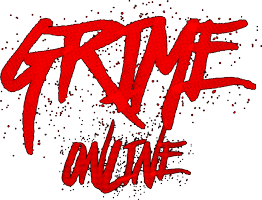A previous version of this article incorrectly identified block party attendee Midge K as Midge Kay. The article has been corrected.
When did you fall in love with hip-hop? That was the question that Majic 102.3 FM’s Vic Jagger asked the several hundred attendees in the audience on Saturday at the block party right outside the National Museum of African American History and Culture.
“If you all were there from the beginning, you better make some noise,” Jagger said to the crowd.
The radio personality helped kick things off as the museum celebrated the first anniversary of its Smithsonian Anthology of Hip-Hop and Rap.
Last August, the museum released the anthology which chronicles hip-hop’s growth and influence. The project began as a collaboration between the museum and Smithsonian Folkways, the Smithsonian’s nonprofit record label, as a way to tell stories about African American music and what experiences inspire that music.
The anthology itself is a multimedia collection that includes 129 tracks on nine CDs ranging from 1973 to 2013, and features such hip-hop artists as Grandmaster Flash, Roxanne Shanté, and Sugarhill Gang. The anthology also includes a 300-page book with essays from hip-hop creators.
Work on the anthology began in 2014, before the museum’s opening, with an executive committee composed of key figures in the music and hip-hop community, such as rappers Chuck D and MC Lyte, historian Jeff Chang, and artist and writer Questlove.
The attendees, both inside and outside of the museum, came out Saturday to appreciate the genre, take part in dance lessons from break dance group Culture Shock DC, attend a panel on the history of hip-hop and rap, and, of course, jam to music.
“What a great occasion to have this festival on the birth month of hip-hop,” rapper LL Cool J said in a video presentation. “Hip-hop culture is important and it is a huge part of American culture in general. We’re dedicated to elevating and celebrating hip-hop culture in every aspect.”
Midge K said she remembered watching hip-hop first sprout in block parties in the Bronx. She said that back then, she and others didn’t believe the style would survive, but said it’s crucial that events like the block party celebrate the importance of hip-hop and rap. She said she still has a lot of music from LL Cool J on her phone.
Hip-hop as a genre began in the Bronx, with Aug. 11, 1973 considered its official birth date. At a party on that date, Clive Campbell, also known as DJ Kool Herc, developed “the break,” isolating the beat track from a record and extending it using two copies of the same record on his two-turntable system. With breaks and record scratches, Herc extended the beat, making the track long enough so that break dancers could keep dancing and Herc himself could start rapping to add flavor to the track.
“We know the history of jazz, but it’s important to see how hip-hop has evolved. Music is a unifier,” Midge K, 59, said. “We continue to see music evolve and, like life itself, if you don’t evolve, you get left behind.”
Dr. Dwandalyn Reece, a curator of music and performing arts at the museum, said on a panel that hip-hop is infused into everyday life, deserves more attention and should be preserved.
“We had the civil rights movement, we had the Harlem Renaissance, it’s no different,” Reece said. “It deserves to be preserved and generations to come deserve to learn from it.”
Kevin Young, who became the museum’s director in January 2021, said the motivation for the anthology was to give a sense of the broader culture that hip-hop created and represents. Young said he hoped visitors learn about hip-hop’s origin and the journey it’s taken since its beginnings.
“I think hip-hop really found its footing in the late 80s and early 90s with people talking about the culture, but it keeps evolving,” Young said. “A lot of what we think about the museum is how Black culture is central to American culture, and hip-hop does that.”
Young said the collaborative effort in creating the anthology is credited to those who led the hip-hop movement in its inception.
“I think community almost leads the way with hip-hop and you have to think about those folks who were pioneers and leaders in hip-hop,” Young said.
There have been no changes in the anthology since its release last year, but Young hopes to keep it going, adding more songs, so people continue to teach and learn about hip-hop.
“Part of this long conversation about what the meaning of hip-hop is important. People have been very responsive to the anthology,” Young said. “Just like any great art, the stuff that works well lasts. There are parts of old-school hip-hop that feel fresh to me and I think that’s the lesson I take. Be layered. Be complicated. Move people, both physically and emotionally.”
News•
News•
News•


